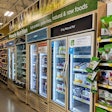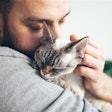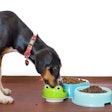
Baby Boomers still account for the highest share of pet food spending in the US, at 40.5% of pet owners, yet Millennial pet owners’ pet food spending comes in at a 17.8% share, fairly healthy relative to their share of income at 16.2%.
This information, courtesy of self-described “Pet Business Professor” John Gibbons (www.petbusinessprofessor.com) based on his analysis of data from the Bureau of Labor Statistics’ 2014 Consumer Price Index (CPI) and Consumer Expenditure Survey (CES), highlights opportunities and challenges for the US pet food market as pet ownership demographics shift.
In 2015, GfK reported that Millennials now surpass Baby Boomers in pet ownership: 35.2% of Millennials owned pets as of 2014, compared to 32.8% of Boomers. Yet Gibbons’ application of the CPI and CES data demonstrates this Millennial surge does not yet equate to pet food or pet product spending. That is not a surprise; People just entering adulthood or starting their careers typically do not have as high of incomes as people who are older or more advanced in their working lives, so they are likely to spend less on just about everything.
As Gibbons points out, the challenge for pet food and product manufacturers is to get pet owners under the age of 25 to start spending earlier, and more, on their pets, while ensuring that Baby Boomers keep spending, at least at their current level.
The good news is that, unlike in the past, today’s older pet owners seem intent on doing just that. Additional analysis from Gibbons shows people aged 45-54 spend nearly 120% more than the average US household on all pet products (not just pet food), with spending falling only to 113% above average for ages 55-64 and to 108% for ages 65-74 (when income falls to 78% of the average household).
Even after age 75, when income falls to 52% of the average (and physical abilities tend to decline), pet product spending still remains slightly higher than income, at 53%. This “makes a strong case that pet parenting is truly a lifetime commitment,” Gibbons said.
Learn more about the changing pet-owning population:
Baby boomers, step aside: Millennials now own more pets, www.petfoodindustry.com/articles/5049
















